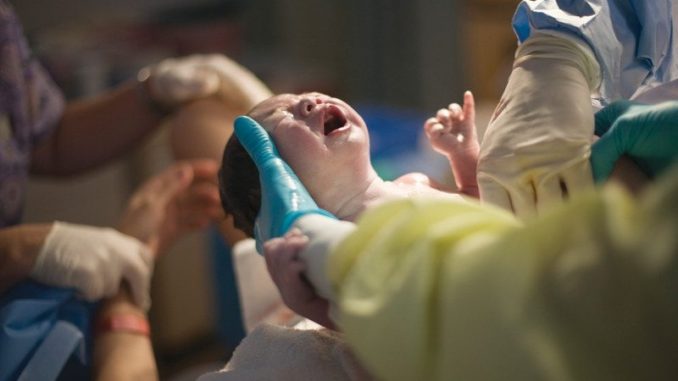
SANTIAGO – There were a total of 231,749 births in Chile in 2016-of which 50.83% were men and 49.15% women, figure marking down 5.6% in relation to 2015, according to the latest Yearbook of Vital Statistics released by the National Statistics Institute (INE) last Friday.
The three regions where most births were recorded: Metropolitan with 41.7% of the total; Biobío, 10.8%; and Valparaiso, with 9.6%.
Meanwhile, the total fertility rate (TFR), or the average number of sons or daughters per woman, was down from 1.8 to 1.7 in the same period nationwide, a figure below the replacement rate (2, 1 average per woman) children, which is the value that ensures the generational change.
In addition to the decline in fertility, in 2016 a trend towards postponement was observed. This, because while in 1979 the groups of 20 to 24 years and 25 to 29 years of age contributed together with 54.9% to the total fertility of women of reproductive ages (15 to 49 years), in 2016 they did so with 45.2%. Meanwhile, in 1979, the age groups of 30 to 34 years and 35 to 39 years contributed a total of 28.2%; in 2016 they contributed 40.1%.
Regarding adolescent fertility, it is estimated that 9.9% of the total live births in the country in 2016 corresponded to children of women between 15 and 19 years old..
#EstadísticasVitales 2016: de los 231.749 nacimientos registrados, hubo 20.138 casos (8,7% del total) con padres no comparecientes, es decir, nacimientos en los que no existieron antecedentes del padre al momento de la inscripción https://t.co/9bc4c0Tuwh pic.twitter.com/UyrOCeYGjk
— INE Chile (@INE_Chile) September 2, 2018
Non-appearing parents
Of the 231,749 births registered in 2016, there were 20,138 cases (8.7% of the total) with non-appearing parents, that is, births in which there were no records of the father at the time of registration. Most of them (27.9%) were sons or daughters of mothers aged 20 to 24 years.
However, in terms of proportion, this situation affected more mothers under 15 years of age, because of the 649 sons or daughters they gave birth to, 237 (36.5%) had parents who did not appear. In addition, 45% of those cases (107 births), the mothers had an incomplete basic education level.
Married couples score a boost
During 2016, 62,464 marriages were registered in Chile, reflecting an increase of 1.2% compared to 2015. In turn, the gross nuptiality rate, or the number of marriages per thousand people, stood at 3.4, same as in 2015.
The average age at the time of first marriage increased in both men and women, from 32.2 to 32.7 in the first case and from 30.9 to 31.5 years in the second, between 2015 and 2016. This, because the largest number of women (62%) who got married in 2016 was between 20 and 34 years old, while the majority of men (around 60%) were between 25 and 39 years old.
The average age at marriage, meanwhile, rose from 36 to 37 years for men and from 33 to 34 years for women, in the same period.
General deaths increase again
In 2016 there were a total of 104,026 deaths, 52.6% of which were deaths of men and 47.3% deaths of women, which reflects an over-mortality of men. In relation to 2015, the total number of deaths increased by 0.7%.
At the country level, 69% of total deaths were concentrated in four groups of causes of death: diseases of the circulatory system (27.1%), malignant tumors (25%), diseases of the respiratory system (9.5%) and causes external morbidity and mortality (7.5%).
Child mortality
The infant mortality rate, that is, the number of deaths under one year of life per 1,000 live births, went from 6.9 in 2015 to 7.0 in 2016. This figure, however, places Chile as the country with the lowest infant mortality rate in South America, in line with health and social advances at the national and regional levels.
The Yearbook of Vital Statistics 2016 was prepared jointly by the Civil Registry and Identification Service, the Ministry of Health and the INE. Here are the complete results, as well as the corresponding synthesis, Demographic and Vital Statistics.



